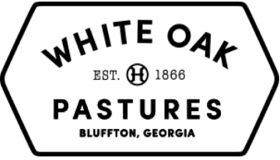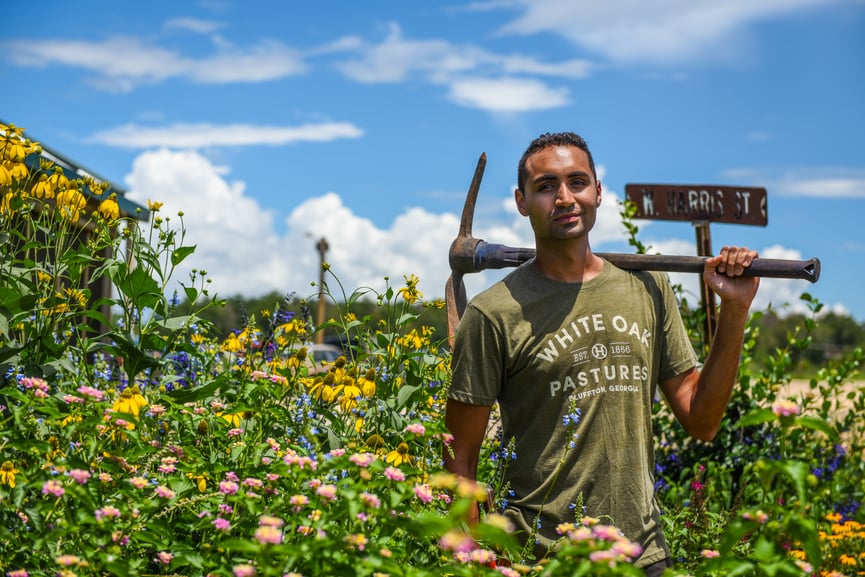
How did you get into the field you work in now?
I was premed in college, so I completed all my requirements and majored in Anthropology and Human Biology. I also had a string of really great environmental studies professors which resulted in me picking up a minor in Environmental Studies. My botany professor was incredibly inspiring- Dr. Eloise Carter. She actually just Snapchatted me a handful of muscadines. Over the summers I was part of something called OIEE- the Oxford Institute for Environmental Education. I was a Teaching Assistant, it was a program for grade school teachers to come through and figure out how to incorporate environmental studies lessons in any subject- math, literature, social studies, etc. I did that for a few years and really enjoyed it. Toward the end of my undergraduate career I’d taken a Medical Anthropology course and became disillusioned with the way we do medicine. In the west, I feel we have a focus on treating the symptoms of the disease and not the cause. I decided not to immediately go to medical school.
I started working in some nice farm-to-table restaurants including Watershed, Empire State South, and Floataway Cafe- eventually becoming a gardener for chefs. I would pick up shifts for restaurants and then grow herbs and produce for them on a small scale. I learned a lot, especially from Chef Ryan Smith who is now over Staplehouse with his wife Kara. What an inspiring guy! I was growing herbs and edible flowers for him. One day he was watching me cut the scapes off of garlic plants. Normally you don’t want the plant to waste too much energy on blooming if you’re growing it for the bulb or the leaf, so I was just cutting them out, and before I could throw them into the compost he said “Wait wait wait, what are you doing? We use those for cooking!”. I just stared at him, “No you don’t”. And sure enough he brought me inside and he had jars and jars of preserved garlic scapes lined up on the shelf. That got me thinking that a lot more was edible than I thought. Parts of plants that I would normally just toss, he taught me that there was a use for all of it. I started researching more, for instance a lot of native blooming plants around Georgia, their petals are edible, a lot of fruits and veggies that we eat- their flowers are also edible. I even learned about borage which is an herb that is starting to gain popularity again.
From there I moved on to design and implement a Therapeutic Gardening Program at a Psychiatric Health Center for teenagers, Viewpoint Health, and eventually even adults entered the program. It was a combination of 22 microhabitats or gardens- from dryscapes, to an arboretum, to an orchard- it wrapped all the way around the building. I fought really hard for funding, that was a struggle every single day. But within a year I was able to make the program integral to what they do there. And it’s still going on without me, which is exactly what I wanted. I wanted to create something truly sustainable which is determinate on the community getting involved. Whatever the community might be- a town, a workplace, if you don’t get people amped about what you’re doing, it will die once you leave. I learned a lot there and it was very inspiring. I sold small amounts of produce from that program to the chefs I used to work with and that in turn helped fund my program, buying tools, equipment, seeds, and flowers. It was there that I noticed psychiatrists, social workers, activity leaders, and chefs all working toward a common goal. It was one of those rare places where several professions had to communicate effectively to determine the best course of action. Every single child had a chart, a background, and all those people had to work together to figure out the best course of treatment for each client. I realized a profession in health was what I really wanted to do. Somehow, I wanted to connect health and sustainability.
From there I decided medical school was the way to go. I moved to Philly to apply to medical schools while I worked for an organic gardening company in Center City called Graceful Gardens. But then, Mr. Will called me one day and said that they wanted me to come back to White Oak. I had worked as a Farm Ambassador for about three years prior to my move North. In this position, I represented White Oak Pastures in Atlanta. It started off with me doing demos with Mr. Will and eventually became me being Jenni and Will’s arms and legs in the city. I did demos, public speaking engagements at conferences, served as a liaison with our food distributors and restaurants, I would help start accounts, and I also managed our presence at the Peachtree Farmers Market. Anything they needed me to do, I did. It was a really rewarding job. I also helped put together the Savory Institute Event at Ponce City Market last year.
Now I live, for the first time in my life, in a small town. I love it, it’s amazing. My friends who live in cities have this image that I live a very slow and isolated life. It’s so hard to explain to them that it’s very busy here, we’re busy all the time. I’ll be working late into the evening and it won’t really feel like work. I think the great thing about this place is that Mr. Will empowers you to be able to complete what you need to do without a lot of micromanaging. He lays out his expectations, he asks for your expectations, and you merge them together and you make it work.
Here on the farm I am still interested in the same thing- sustainability and health. I want to see how the food we grow here on the farm helps create a healthy lifestyle for our employees and for our visitors. When we make our garden installations we look at it from the perspective of our community's health. From the responsible sourcing of materials to the overall aesthetics of a garden, each component has a role to play in involving the people who benefit from an installation. My next door neighbors who don’t work for the farm have been loving the plantings all around town and give me compliments all the time. They tell me about their family’s stories and share their own experiences in growing fruits and vegetables. Even that is a part of health- mental and physical well being are tied together and both are integrated with your environment. I see it in everything. In Bluffton, I imagine a community space for everyone to gather. When you have places like that, people will get outside, they will exercise, they’ll talk to each other, they’ll share recipes, they’ll use the food that we grow here on the farm, and they'll cook together. We are so lucky.
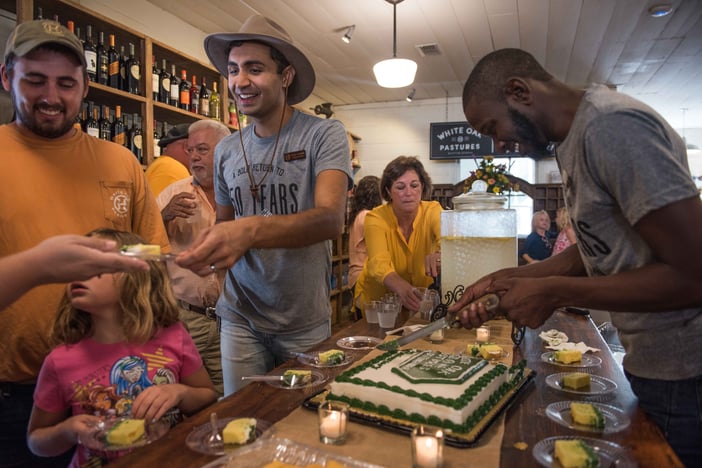
What is the most satisfying part of your job?
That I’m finally at a point in my life where all of my interests have tied together and I’m at a place where I can express that and pursue them every day.
What I love has become what I do. I feel like that’s a point that everyone strives to reach in their lives. This is definitely that place for me. This is where I belong. My life has been pointing me in this direction for a long time. Sometimes it takes someone else to put it in front of you and then you see it.
What is the biggest challenge you face at your job?
The most challenging part for me is reeling myself in. When I started at the Psychiatric Health Center, I basically started all 22 of those gardens at once. I near about wore myself out. Here, I have a lot of ideas, but I know that if I implement everything all at once- nothing will get accomplished. For the next few months my focus is building up the garden soil in Indigo Pasture, keeping Bluffton beautiful, and hiring a great garden staff. Slow, sustainable progress. If I rush into everything, it will be haphazard and nothing will get completed. Poor design is one of my biggest pet peeves. My garden team and I will be driving and I’ll see something on the side of the road that we need to prune or fix and I’ll just swerve to the side exclaiming “wait we have to do this” and they’ll immediately return with “no, go back, you have other priorities today!”. My team is good about keeping me on track.
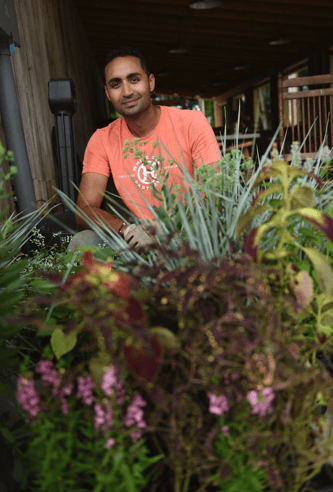
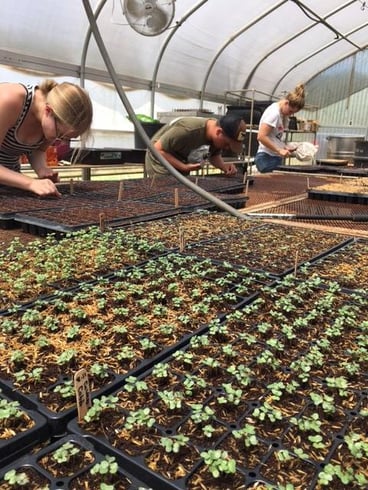
What has been your proudest moment since working here?
This seems really simple, but my proudest moment is a day that we were thinning seedlings in the greenhouse. There was Chenoa from our our restaurant (who asked me to give her work in the garden part time), Dakota, one of my new employees, my visiting friend who has her doctorate in literature, our garden intern, and Jaime my senior employee. I remember looking up to see all of them quietly and deeply involved in their work. They were making jokes and helping each other along. Thinking about that day still makes me teary eyed. It was in that delicate moment where so many different walks of life combined into one path.
What is your favorite food in the dining Pavilion?
The beef tongue tacos.
If you could trade roles with someone on the farm for a day, who would it be and why?
Jenni Harris, because she’s a badass.
Choose one word to describe White Oak Pastures.
Collaboration. All parts of the farm have to work together to make it succeed.
What’s the best, and worst, part of living in this part of GA?
There are so many good parts. The best part about living in Bluffton, specifically, is the sense of purpose that I’ve been given here. It’s refreshed my drive.There is always some sort of good work to be done. It keeps you outdoors which I really like.
The worst part would be reforming your social networks again. I lived in Atlanta for 30 years and I always had people to hang out with, every minute of every day was booked. Here, sometimes, I have to restructure my approach to socializing.
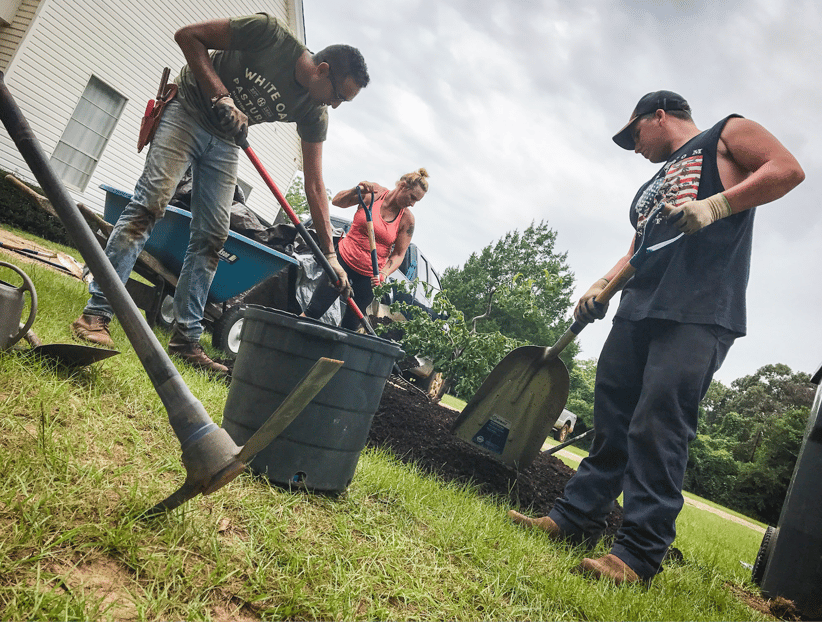
What is your favorite meal to cook at home (with White Oak Pastures products)?
My famous goat and beef bolognaise. Most people don’t even realize I sneak goat into the recipe. Goat is actually the most consumed protein on the planet. But, at the Peachtree Farmers Market, it was incredibly hard for me to sell. I had to get really creative in researching ways to prepare and cook goat so I could convince people to try it. It has a pretty mild flavor and the texture is very smooth. I would always try to start them off with ground goat. I like to mix goat and beef together, the consistency is great. I cook it with chopped up tomatoes for a long time, almost half the day. It makes a rich brown sauce that I add to everything, rice, spaghetti squash, vegetables.
What’s your favorite daily chore?
This is going to sound so mundane, but I really like shoveling compost into the truck. All of us are together, we’re all working toward one very definite goal, we usually do it first thing in the morning because you do not want to be shoveling compost in the afternoon, in August, in the South. It wakes you up, you’re getting your muscles moving, it’s physical work but it’s not that challenging. That’s the time that I process my day- I know what I want to get done that day, and that’s when I talk it over with my staff. Also when you add that compost into the soil, you are making a permanent change in the soil. You are building it up, making it better able to absorb nutrients and water and providing a medium for bacterial and fungal growth. Just that simple task of shoveling compost into the truck, taking it out to the field, and amending it into the clay soil- you’ve done a lifetime of work in one morning chore.
What’s your favorite hobby outside of work?
Biking. I was worried that I wouldn’t be able to bike here because we don’t have bike trails and we don’t have a Beltline. But really, all of Bluffton is a beltline because we don’t have a lot of traffic and drivers are super friendly.
-3.jpg)
